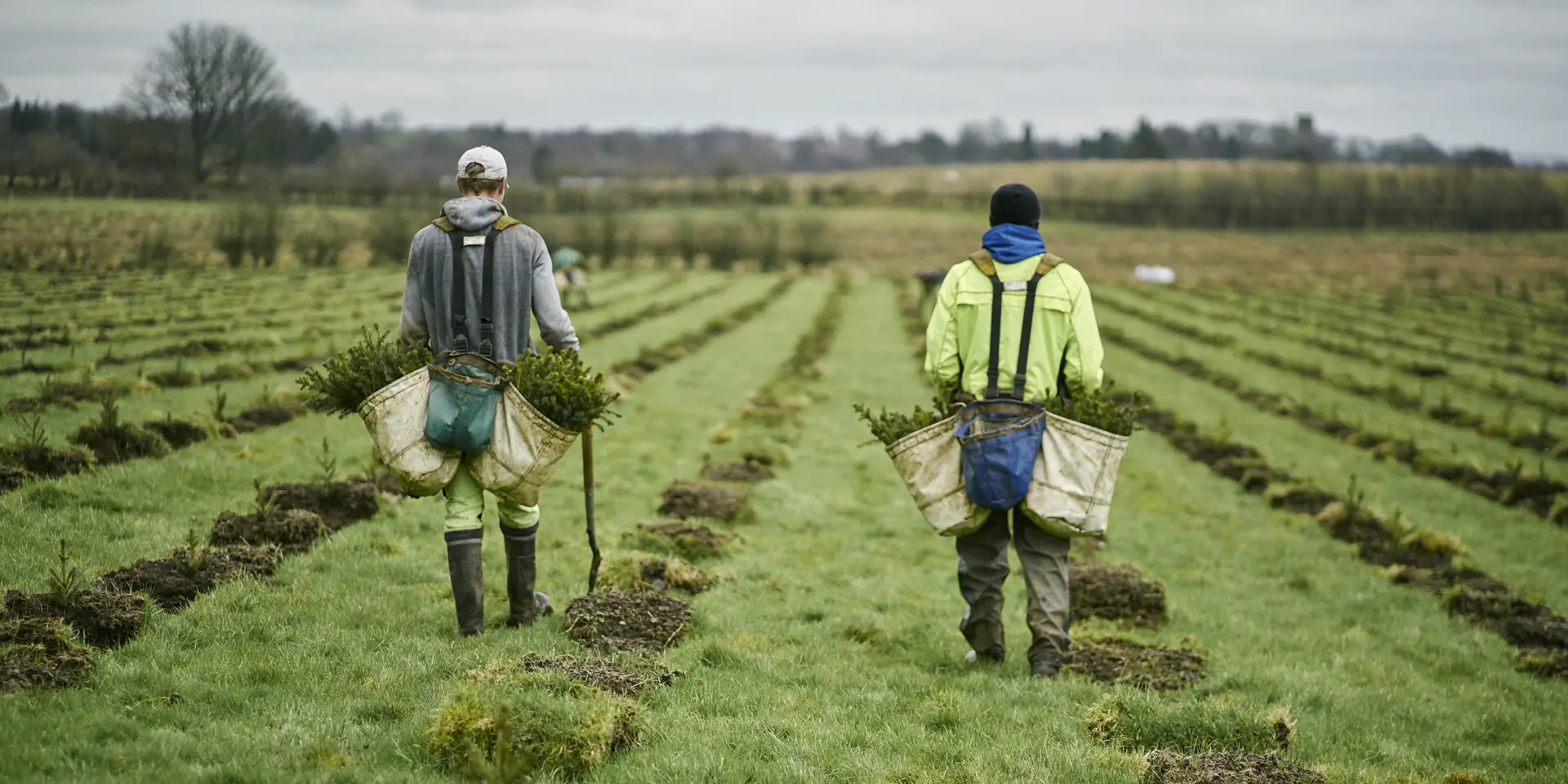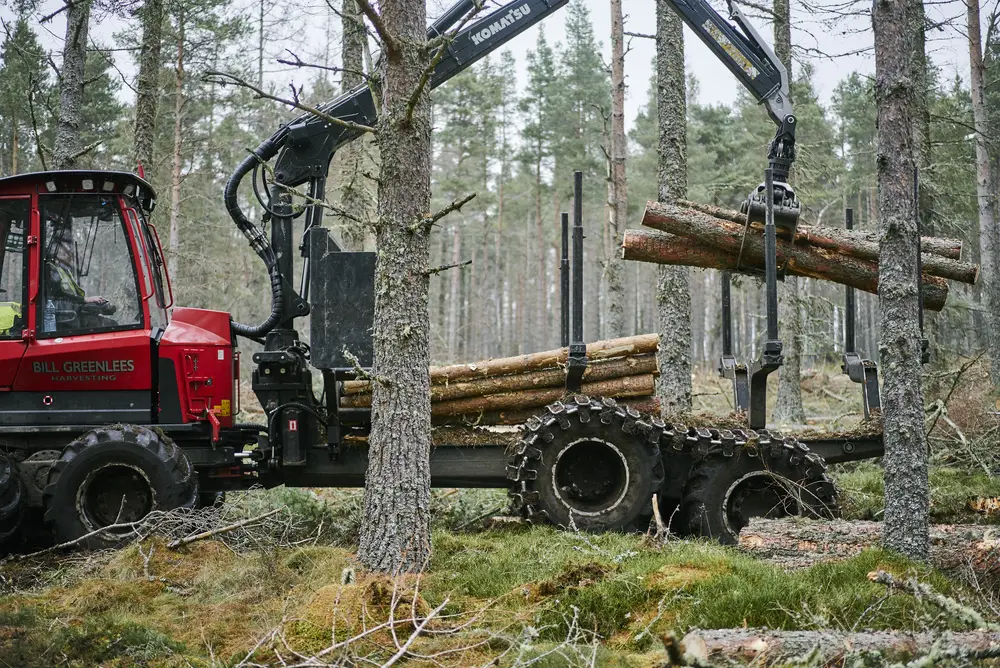Planting and felling: your questions answered
Planting and felling: your questions answered
Growing our forests by establishing more trees is at the core of everything we do. It’s also the most direct method we have for tackling the climate emergency. But felling trees is also crucial to providing sustainable materials for the myriad parts of our modern lives. It’s crucial we get the balance right. We’ve got to plant the right species in the right places.
We’ve got to strike a balance between trees for timber and trees for habitats. We’ve got to make sure our trees are able to adapt to the threats of a changing climate. That’s why we’re working harder than ever to ensure Scotland’s national forests will continue to thrive in years to come.

Below, we’ve answered some of the most frequently asked questions about our planting and felling operations:
How many trees do you grow?
Over the last five years we have created over 4,000 hectares of new woodlands (roughly 3,000 football pitches). That’s new areas of forests where previously trees weren't growing. We’ve also replanted an area of 32,500 hectares (an area larger than Malta). Most of the trees that we establish are grown in nurseries and planted out as saplings. But, a significant and increasing number are grown naturally from seed in the forest. This is a process we call ‘natural regeneration’. In 2021, we’re establishing 5 trees for every person in Scotland, around 25 million in total.
What species do you plant?
Our planting overall is a broad mix of species including conifers and broadleaves. Most brand new woodland is planted with native trees like Scots pine, oak and birch. Timber producing forests are mostly re-planted with conifers like Sitka spruce, Douglas fir and various pines with areas of broadleaves to help make them more attractive to wildlife. However, we’re now adapting most forests by establishing a wider range of species in order to lower the risk of damage from diseases and pests. Overall, we plant more conifers than broadleaves.
Why are there more conifers?
We plant more conifers because we need timber. In the UK we currently import 80% of what we use, and are the second largest importer of timber after China. The country needs a supply of sustainably produced timber to build houses and buildings, to make furniture, to make pallets that deliver food and medicines, and a host of other applications. Conifer trees grow far quicker than most broadleaves. A crop of conifers could be ready to harvest in 40-50 years. At that age, an oak tree is barely getting started.
Additionally, softwoods like conifers are preferred in industries like construction for their strength-to-weight ratio and ease of fabrication. Using hardwoods for construction would vastly increase the cost of buildings. Conifers are also better adapted to the current degraded state of Scottish soils.
Why do we need to grow trees for timber?
It’s important Scotland can produce its own timber rather than relying on imports from abroad. Buying timber from, for example, Scandinavia, means wood must go on long journeys by truck and ship before even getting to Scotland. This adds unnecessary emissions to a sustainable building material. It also leaves the country open to high and uncertain prices for timber, in much the same way as natural gas. By growing our own timber, our carbon footprint is lower, supply is steady and prices are stable.
And it’s not just basic timber that comes from trees. New uses of parts of trees are constantly being discovered, from medicine to paints, and even mobile phone screens. The more applications we can find for wood, the less we need to use harmful plastics and other unsustainable materials. Growing more trees for timber helps our modern world to become greener.

How do trees help the environment?
Trees are a massive part of the environment and help create a healthy ecosystem. Throughout their lives, trees absorb carbon dioxide and produce oxygen. This provides air for us to breathe. They also store emissions from our modern lives, like the carbon dioxide from cars and air travel, emissions from generating electricity, and a whole lot more. CO2 entering the atmosphere is what is gradually heating the planet, causing extreme and unpredictable weather and a changing climate. More trees help to capture more emissions.
Planting trees in strategic spots also helps improve the surrounding area. Planting deep-rooted species on steep slopes can help bind the slope together, preventing land slips. This is happening now in several locations in Scotland above key transport routes. Forests can also help to improve soil and store water, moderating flows and reducing the impact of flooding and droughts, helping us to adapt in the face of a changing climate.
So, why do you cut trees down?
When a tree is felled, the CO2 it has captured throughout its life is trapped in the resulting timber. If that timber is used to build a house, the wood used will continue to lock up CO2, storing those emissions for as long as the house stands. If it is used for packaging instead of plastic, it reduces our use of unsustainable materials. Felling trees for timber allows us to reduce our environmental footprint, and planting new trees on the same site begins the cycle of absorbing emissions again.
Why do you plant all the same trees together?
Through the twentieth century we developed very efficient plantations of single species that could be harvested cost-effectively. Planting the same species together became standard practice. Now, we realise that there are downsides. A warming climate has made some species vulnerable to diseases and pests, and we know that a diversity of species makes for better habitats and better places to visit. By adapting the composition of our forests and including more variety we can make our forests more likely to meet our needs in future. However, we will continue to have large tracts of single species (especially in the uplands where soil nutrition and wind are limiting factors) and where timber production is the priority.
Where do your trees come from?
The vast majority of our trees are grown from seeds at our nursery at Newton, near Inverness. This facility is a world leader in tree planting, helping to create new technologies to increase yield and improve efficiency. Where possible, we use seeds from the UK to prevent the spread of diseases. We also grow trees directly in the forest, where we have good seed sources and good conditions for early growth. This is a much more uncertain way of getting our forests started, but is becoming more important as we work on reducing the impact of our operations.